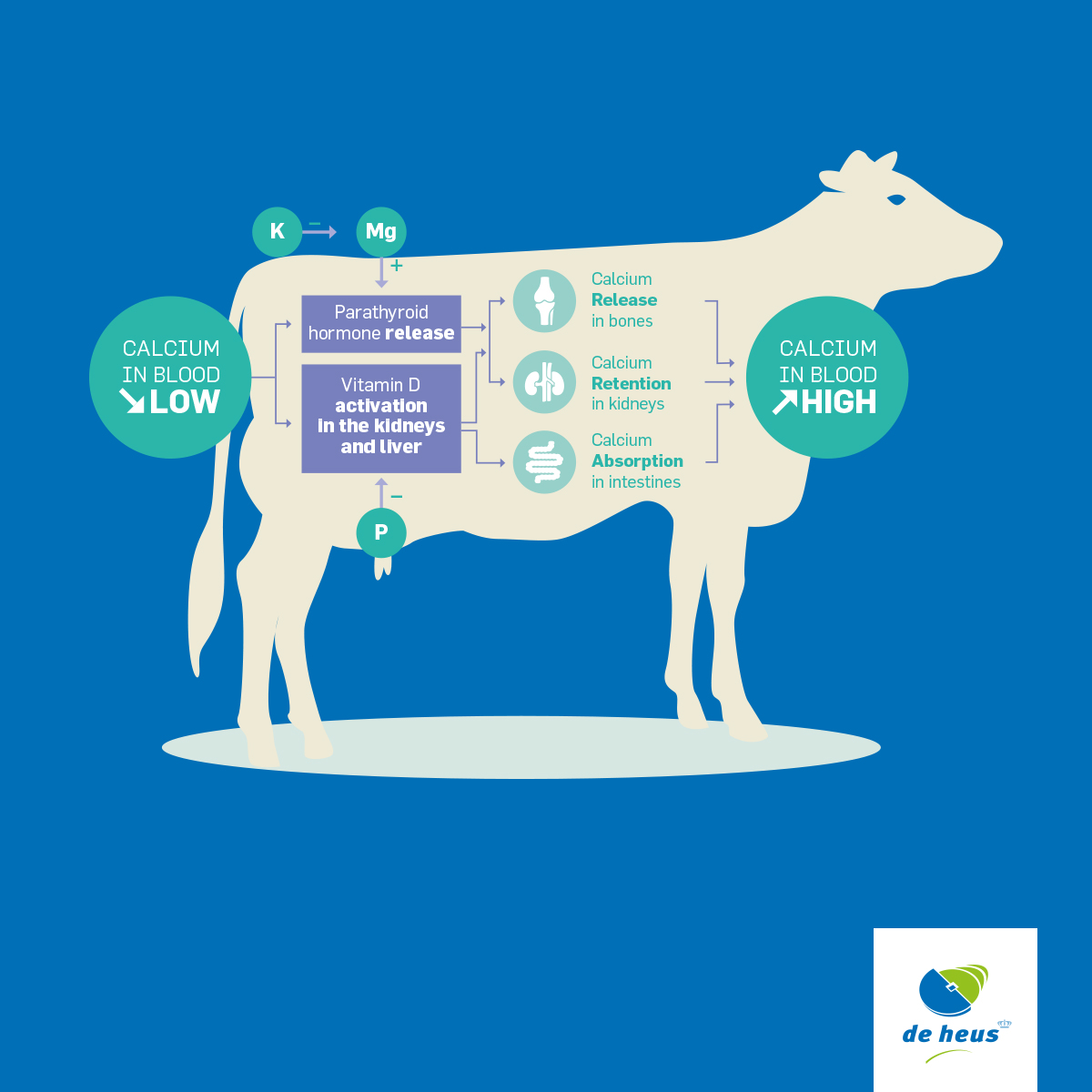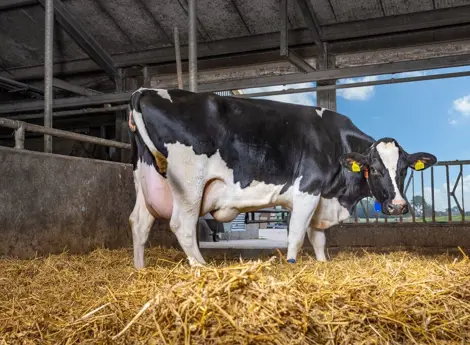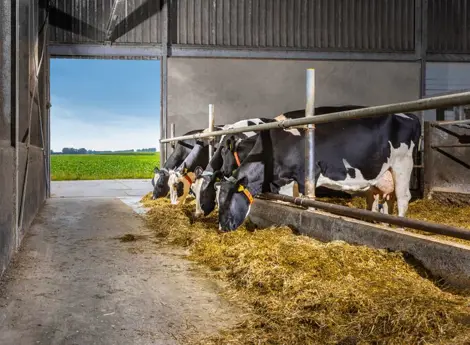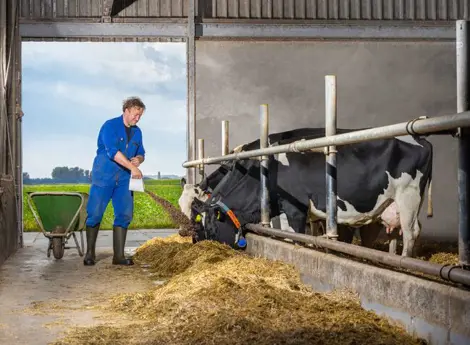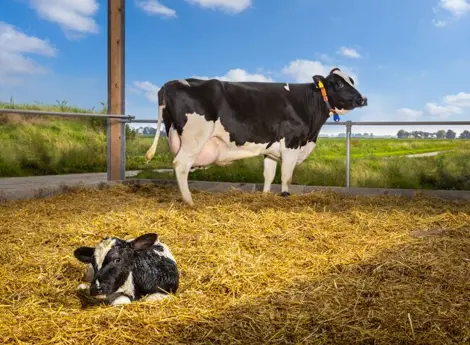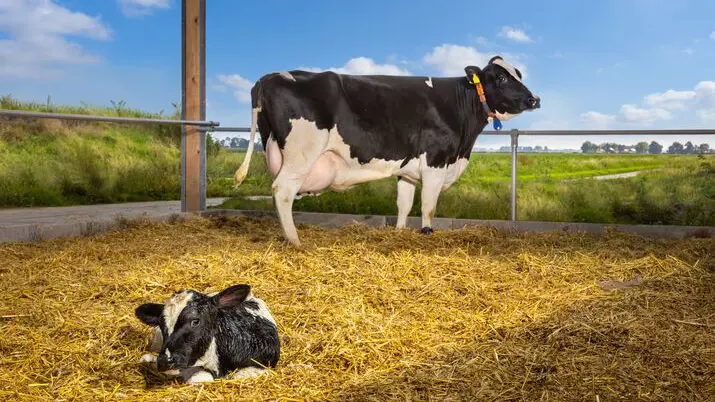
The De Heus Prelacto Dry Period Plan will help you optimise the transition period between lactations to improve your cows’ performance and significantly reduce the impact of disease on your herd. You’ll unlock amazing results – saving time, money and effort.
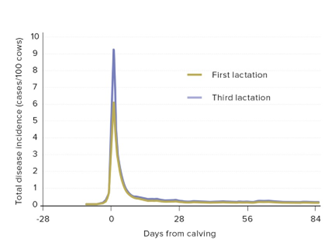
Figure 1: Total disease incidence relative to days from calving for first- and third-lactation cows
EFFECTIVE DRY-PERIOD MANAGEMENT – WHY IT MATTERS
The dry period enables cows’ udder tissue to regenerate – clearing out old intra-mammary infections and boosting milk production during the next lactation. But the transition period is also when cows are most vulnerable to disease (see Figure 1), and it plays a key role in their longer-term health and milk performance.
The Prelacto Dry Period Plan will help you achieve:
- An easy, healthy start to lactation
- Improved fertility
- Longer lifespans and reduced culling rates
- Significant drop in disease and related treatment costs
- Higher profits (average of R 150 000 per 100 calvings)
THE TRANSITION PERIOD HAS FOUR PHASES:
- The ‘drying-off phase’: the final weeks of lactation.
- The ‘far-off phase’: the first four weeks of the dry period.
- The ‘close-up phase’: the last two weeks of the dry period.
- The ‘early-fresh phase’: the early weeks of the new lactation.
The Prelacto Dry Period Plan allows you to carefully manage your cows’ health and diet across these critical stages, to keep the health and financial impact of diseases to a minimum. This involves managing your cows’ body condition scores and maintaining optimal feed intake.
A SHORTER DRY PERIOD
While most farms apply an eight-week dry period, the Prelacto Dry Period Plan recommends a dry period of around six weeks. This allows you to improve the fertility of your herd without im-pacting milk production. With the support of our decision tree, you can decide which cows need to be treated with antibiotics.
BOOSTING CALCIUM LEVELS
Cows require a large amount of calcium at the start of the lactation phase. One way to increase calcium levels around calving is to reduce the cation anion balance (DCAD) during the close-up phase. Our proven DCAD strategy makes it easier for cows to transition to the next lactation.
“By optimally managing the transition period, you can unlock the door to increased earnings, reduced workload and improved work satisfaction.”
PREVENTING SEVERE NEB AND KETOSIS
Ketosis is a common yet serious health issue in dairy cows that can lead to poor milk production and reproductive performance. Ketosis typically results from a severe negative energy balance (NEB) at the end of the dry period or during early lactation. The Prelacto Dry Period Plan provides an effective three-step approach to reduce the risk of NEB and ketosis. It includes maximising your cows’ feed intake and optimising their body condition during the dry period, as well as shortening the dry period to around six weeks or less.
REDUCING PHOSPHOROUS INTAKE
Most farmers monitor the most common dietary minerals including calcium, potassium and magnesium. But don’t underestimate the role phosphorous plays in a cow’s nutrition: reducing phosphorous during the dry period is an important part of preventing subclinical diseases, especially hypocalcemia around calving (see Figure 2).
SELECT A TOTAL, ALL-ROUND SOLUTION
Our proven Prelacto Dry Period Plan brings together all these insights and more to help you achieve increased earnings, a reduced workload and higher work satisfaction. The plan includes different management strategies customized to your farm, specific nutritional products and housing advice.
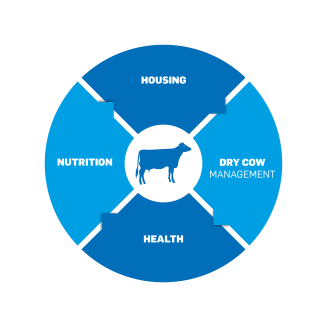
WANT TO KNOW MORE?
Get in touch with your De Heus specialist today for a tailormade consultation!
